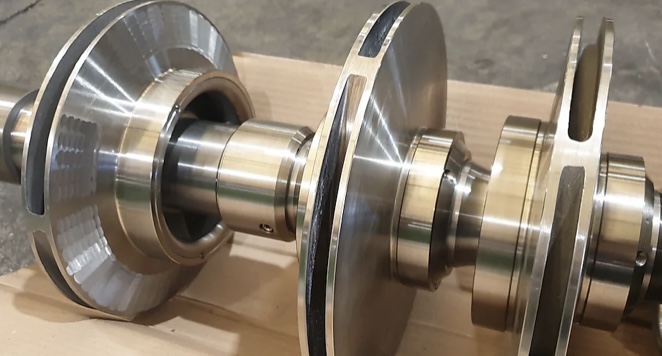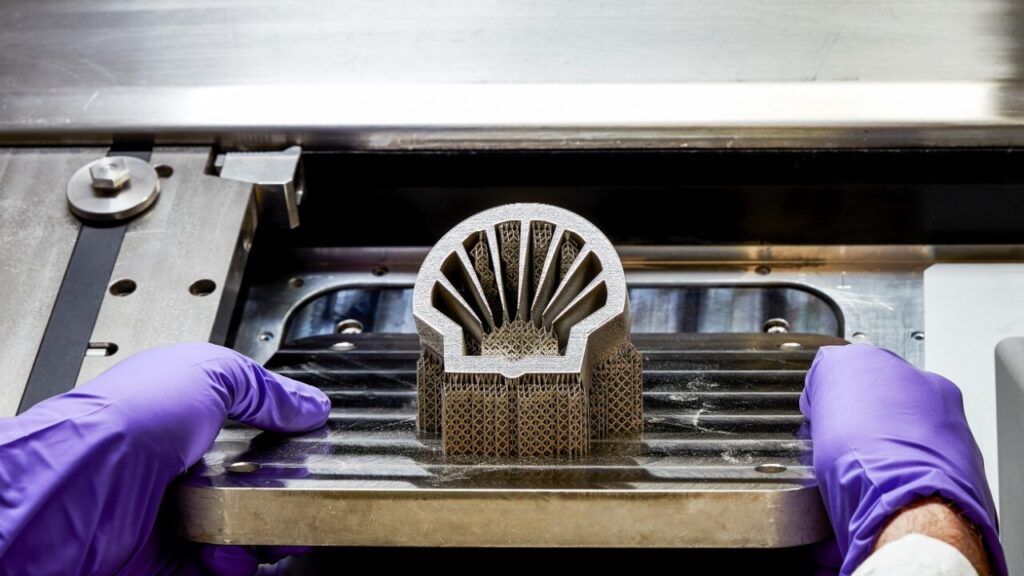Oil & gas majors are at what is perhaps the greatest crossroads in their history, with the largest fossil fuel conglomerates bringing in record profits, receiving record amounts of social and political backlash, and facing unprecedented uncertainty in terms of both supply and demand. Beyond the oft-discussed windfall taxes by governments, and pure investments in alternative fuel sources by the companies involved, the much subtler issue of digitalization strategy — centered around additive manufacturing (AM) — will also be a critical factor determining the long-term winners and losers in the energy transition.

Of course, that is precisely because digitalization isn’t unrelated to issues like tax burdens and renewables programs. AM-centered digitalization is in fact intimately linked to those considerations, as well as to the rest of the gamut of crises and opportunities that the world’s most powerful energy concerns will probably be dealing with indefinitely. As much as any other company, Shell exemplifies this nexus between macro and micro catalysts.
As the company’s 3D Printing Technology manager, Angeline Goh, put it when I interviewed her in January, “There’s a general sense that the disruption [in 2020 and 2021] wasn’t just Covid…then came the war [in Ukraine], as well. The compounded effect of supply chain disruption really took a hit [in terms of] people being able to get materials and spare parts. [So now,] countries are putting in strategies, I would say, to create supply chain resilience.” And, Goh contends, now that this trajectory has been initiated, it’s not going to go away merely because of short-term fluctuations: “…there’s a second driver that will propel and still be an effective consideration for continuing in the journey of localization in manufacturing. And that will be seen from the angle of sustainability…”
This is the key to understanding the crucial link between the historically consequential path ahead for oil & gas majors, and an, at first, seemingly “smaller”, less momentous topic like digitalization. There are many different things that fossil fuel companies can do, are doing, and will likely do more of, in order to minimize their carbon footprints over the next decade. One realistic, particularly cost-effective weapon in that arsenal will be the buildup of a combination of digitalization and advanced manufacturing, with 3D printing at the forefront of that effort.
Specifically concerning the use of metal AM for oil & gas industry spare parts, Goh explained that it has a two-way impact on sustainability: “…[First,] in parts that may not be used, and then shipping that compounded weight across the globe…[Instead,] you’re shipping mere powder, and the powder gives you the agility to then produce only the quantity and the amount [that you need]…The second part is, many companies are already working actively into figuring out how to circulate or regenerate the powder usage in the process.” Thus, there are the potential emissions reductions from shipping less weight, wasting less of the weight shipped, and, as opposed to keeping spare parts on hand, “…we will be relying and keeping our spares just in the form of a data package.”

A 3D print of the Pecten, Shell’s iconic logo.
Of course, none of the individual changes that are possible will amount to much, in aggregate, unless they constitute a consistent, cumulative shift by the oil & gas sector as a whole. This is why, for instance, Shell recently joined a partnership to bolster the digital inventory ecosystem that includes four other oil & gas conglomerates.

Prototype of a new design for an oxygen/hydrogen micro mixer, 3D printed by Shell in Amsterdam in collaboration with GE.
The importance of this type of partnership is something that Goh placed a strong emphasis on: “I would say that actually [standardization is] a driver for the recent announcement [of the partnership]…companies are realizing that we can benefit if we work together because we have a common need of wanting our spare parts just in time and produced closer to our operating sites, and to work together to operationalize [AM] demand through a common digital ecosystem. …I do think there’s a lot of interdependency of factors that are contributing to the scaling of [AM]. What encourages me to see is that as a sector, we certainly are taking steps to move this forward: it’s no longer about only prototyping, but really making a commitment that this digital inventory is part and parcel of the new way of using material.”
Thus, the best way for oil & gas majors to contribute to global carbon emission-reduction efforts cannot just involve companies transitioning into becoming direct generators and suppliers of renewable energy, but must also be paired with a serious, comprehensive focus on industrial waste reduction. The less that materials are used unnecessarily in the oil & gas supply chain, the more that those same materials can then be redirected towards alternative energy supply chains. Then, long-term, it might make the most sense for companies like Shell to increasingly transition towards using their experience in digitalization and AM to supply parts and services for all the energy sources beyond oil & gas.
All images courtesy of Shell unless otherwise noted
Thanks to Angeline Goh and Francis Masson for making the time for this interview
Subscribe to Our Email Newsletter
Stay up-to-date on all the latest news from the 3D printing industry and receive information and offers from third party vendors.
You May Also Like
Profiling a Construction 3D Printing Pioneer: US Army Corps of Engineers’ Megan Kreiger
The world of construction 3D printing is still so new that the true experts can probably be counted on two hands. Among them is Megan Kreiger, Portfolio Manager of Additive...
US Army Corps of Engineers Taps Lincoln Electric & Eaton for Largest 3D Printed US Civil Works Part
The Soo Locks sit on the US-Canadian border, enabling maritime travel between Lake Superior and Lake Huron, from which ships can reach the rest of the Great Lakes. Crafts carrying...
Construction 3D Printing CEO Reflects on Being Female in Construction
Natalie Wadley, CEO of ChangeMaker3D, could hear the words of her daughter sitting next to her resounding in her head. “Mum, MUM, you’ve won!” Wadley had just won the prestigious...
1Print to Commercialize 3D Printed Coastal Resilience Solutions
1Print, a company that specializes in deploying additive construction (AC) for infrastructure projects, has entered an agreement with the University of Miami (UM) to accelerate commercialization of the SEAHIVE shoreline...






























